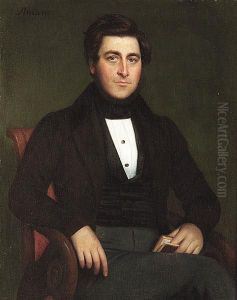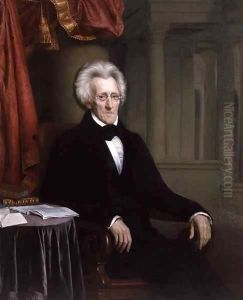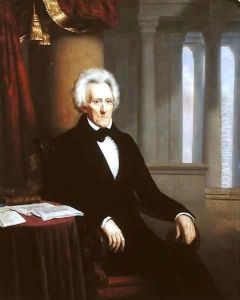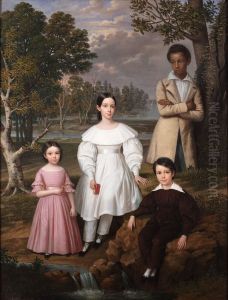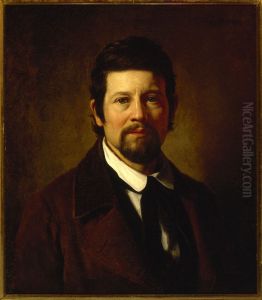Jacques Amans Paintings
Jacques Guillaume Lucien Amans was a French-born portrait painter who became prominent in the United States, particularly in New Orleans, Louisiana, during the antebellum period. Born in Maastricht, which is now part of the Netherlands, in 1801, Amans brought European artistic training and sensibilities to the burgeoning art scene of New Orleans in the 19th century. His career and artistic output offer a fascinating glimpse into the cultural and social milieu of the time, bridging European artistic traditions with the unique cultural landscape of early America.
Amans arrived in New Orleans around 1836, a period when the city was a melting pot of cultures, languages, and traditions. This vibrant and diverse backdrop provided ample inspiration and patronage for an artist of Amans’ talents. He quickly established himself as the preeminent portrait artist in the city, capturing the likenesses of many prominent citizens and families. His portraits are noted for their realism, attention to detail, and subtle rendering of character, qualities that made his work highly sought after.
During his time in New Orleans, Amans also traveled back to Europe, including a significant period in Paris in 1842, where he furthered his studies and was exposed to the leading artistic trends of the day. These experiences enriched his artistic approach and allowed him to incorporate contemporary European techniques and styles into his work, further elevating his standing in the New Orleans art scene.
Amans’ contributions to the arts were not limited to his portraits. He played a significant role in the cultural life of New Orleans, engaging with the local artistic community and participating in the establishment of art exhibitions and societies. His influence extended beyond his immediate circle, as he helped cultivate a broader appreciation for fine arts in a city more known for its musical and culinary contributions to American culture.
Despite his success and influence, the outbreak of the Civil War and the subsequent changes it brought to the social and economic landscape of the South led Amans to return to France in the latter part of his life. He continued to paint until his death in Paris in 1888. Today, Jacques Amans is remembered not only for his artistic legacy but also for his role in the cultural history of New Orleans. His works are preserved in various institutions, including the Historic New Orleans Collection and the Louisiana State Museum, serving as enduring reminders of the rich cultural tapestry of New Orleans in the 19th century.
